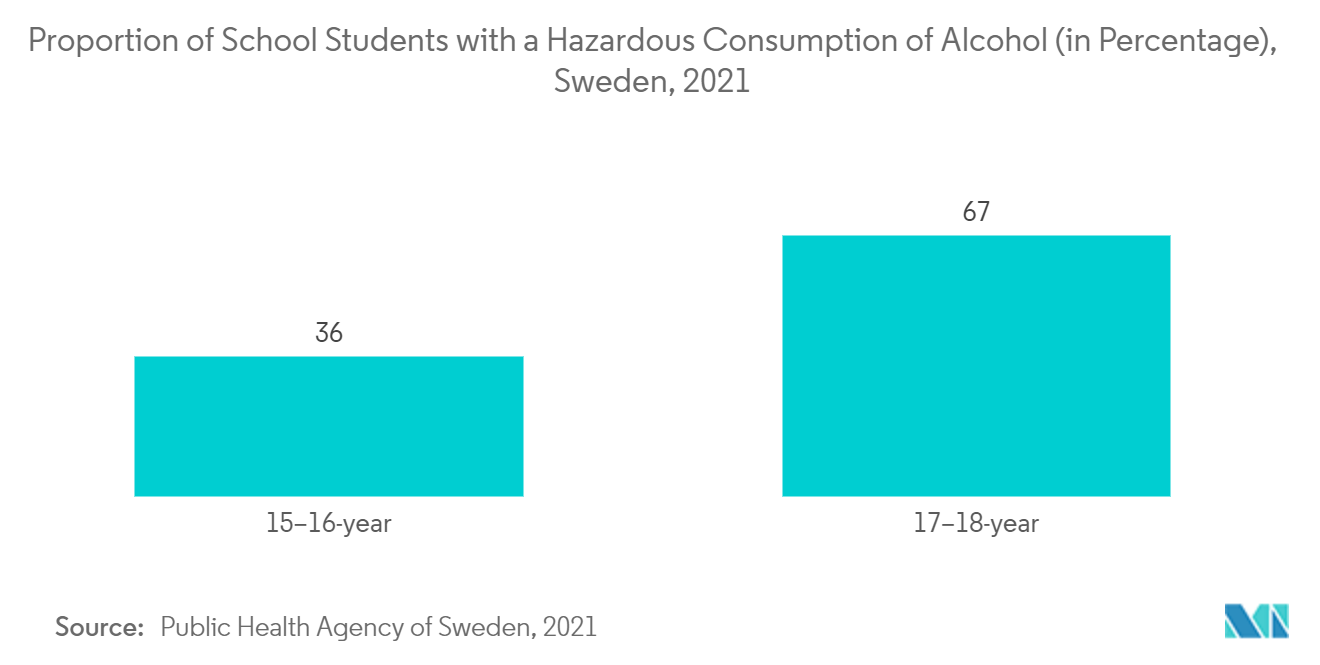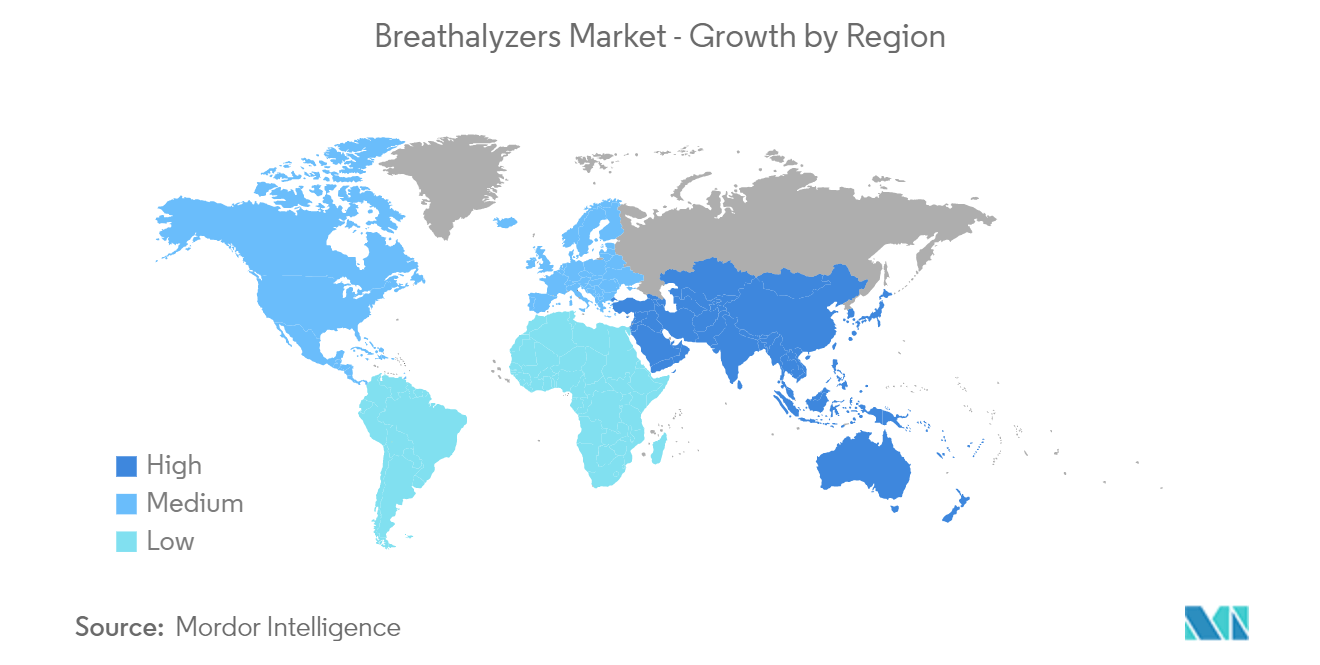Market Trends of Breathalyzers Industry
This section covers the major market trends shaping the Breathalyzers Market according to our research experts:
Fuel Cell Technology Segment Expected to Witness High Growth
Fuel cell technology is anticipated to hold a significant share in the breathalyzers market during the forecast period. This is due to its wide range of advantages, such as the compact size of the device, higher accuracy, longer life, and less requirement of power. According to an article published by Breathalysers Australia in September 2022, a fuel cell breathalyzer sensor can provide consistent and accurate Blood Alcohol Content (BAC) readings from 0.00% to 0.400%. This includes detecting trace amounts of alcohol. Fuel cell sensors are one of the most used breathalyzers in the market to check BAC. Most countries established a legal limit of 0.08 grams of alcohol per 100 milliliters of blood as it is the point at which a driver is considered legally intoxicated. According to the State of California Department of Motor Vehicles handbook, section 26, any driver whose blood alcohol is more than 0.08 is considered inebriated while operating a vehicle and is not permitted to do so. Thus, a constant and accurate BAC reading with fuel cell technology is expected to increase the demand for fuel cell breathalyzers, and thus, drive segmental growth.
The manufacturers are concentrating their efforts on enhancing the features of their available breathalyzer devices by incorporating innovative technology. New product launches in the area will boost the growth of the market segment. For instance, in May 2021, Hanwei Electronics Group Corporation launched three new models of breathalyzers: DZ512, AT200, and AT8070. Such enhancement is supposed to drive the segment's growth.
Therefore, owing to the launch of fuel cell technology-based breathalyzers and the high accuracy and reliability associated with them are expected to complement the growth of the studied market segment over the forecast year.

North America Expected to Dominate the Breathalyzers Market
North America holds a significant market share in the breathalyzers market worldwide, mainly due to the high consumption of alcoholic beverages, stringent laws for mandatory alcohol testing, and increased usage of breathalyzers by law enforcement agencies for alcohol and drug abuse. For instance, in the United States, as per the 2022 report from National Institute on Alcohol Abuse and Alcoholism, more than 14 million adults ages 18 and older have alcohol use disorder (AUD), and 1 in 10 children live in a home with a parent who has a drinking problem.
Furthermore, according to an article published by Healthline media in July 2022, law enforcement often uses the breathalyzer test to determine whether someone has been drinking and driving. The results of breathalyzers administered by police are used in court. It is a crime to drive with a BAC level of 0.08% or higher per federal standards. Additionally, under Canada's Criminal Code, drivers who refuse to provide a breath sample to a police officer when pulled over under suspicion of impaired driving can be charged with refusing a demand. Also, Mexico's Mobility and Road laws saw permanent breathalyzers and mandatory driver exams. Thus, the usage of breathalyzers by law enforcement agencies for alcohol and drug abuse is expected to drive the market.
Thus, the factors such as high alcohol abuse and enforcement of laws to check BAC are expected to complement the growth of the regional market.

